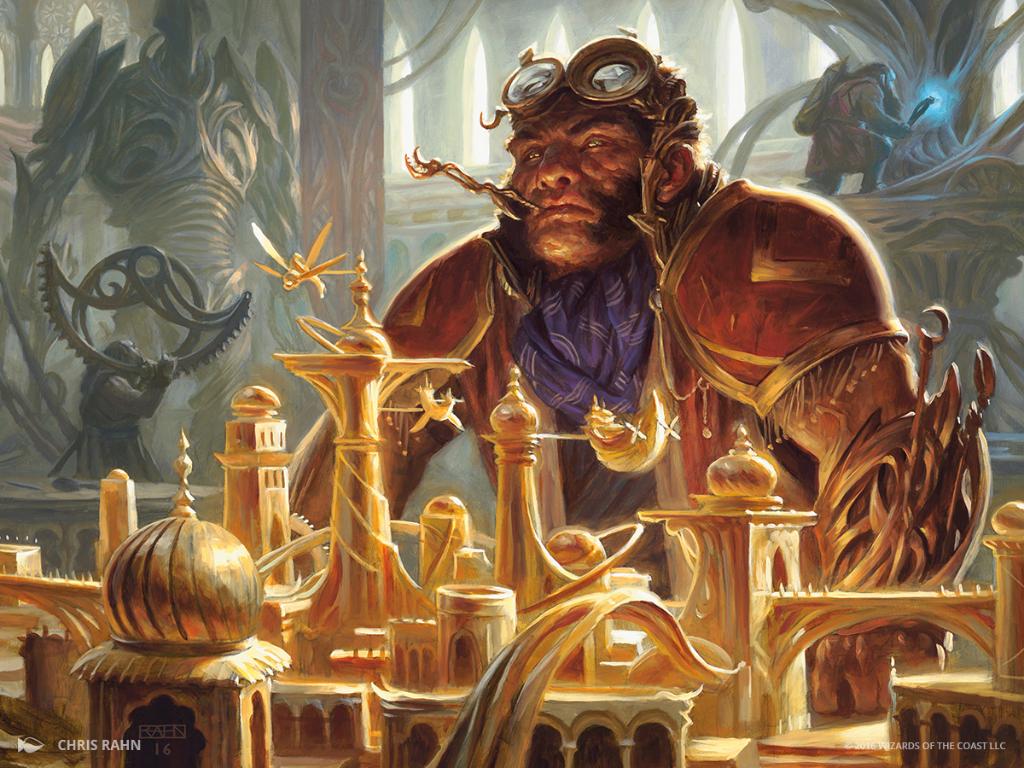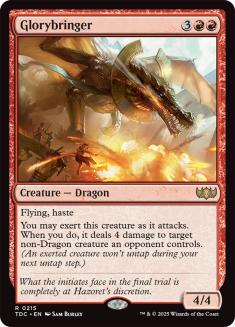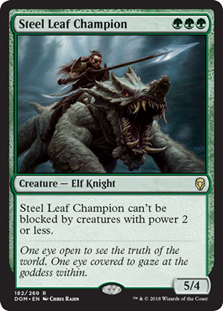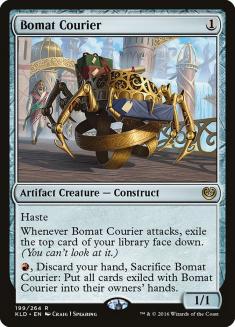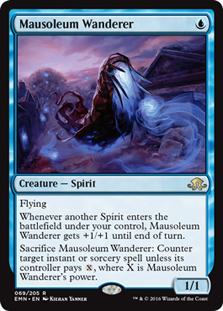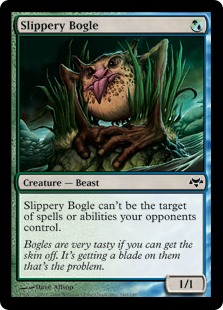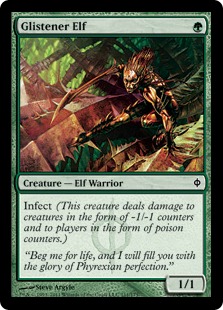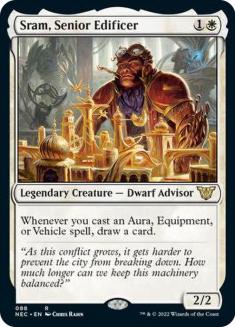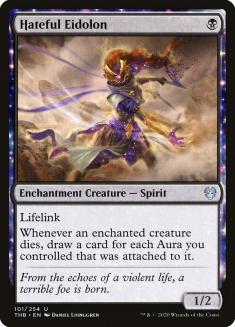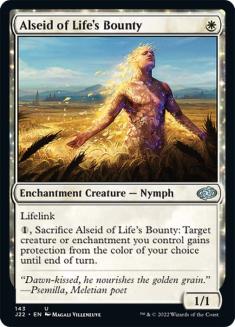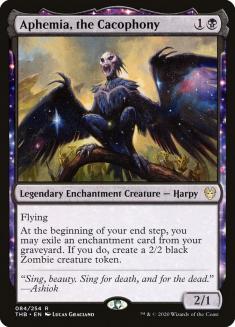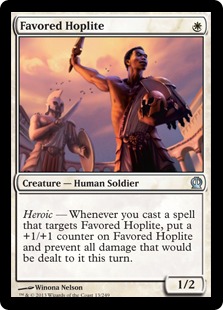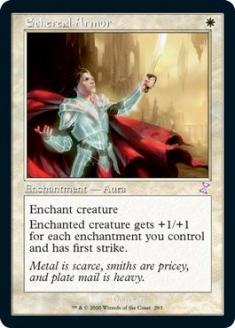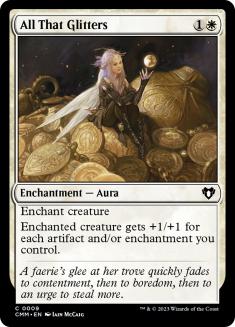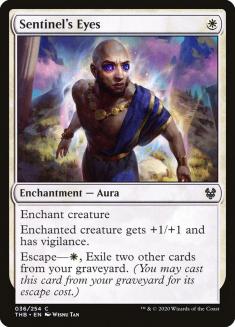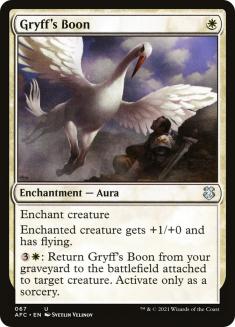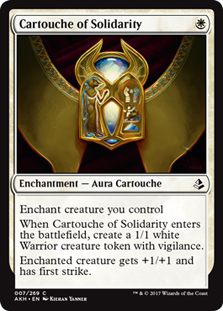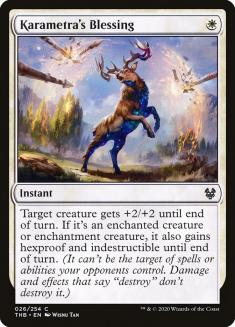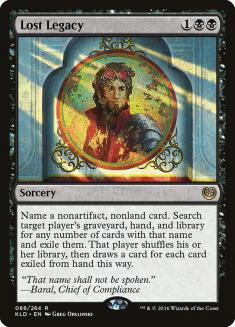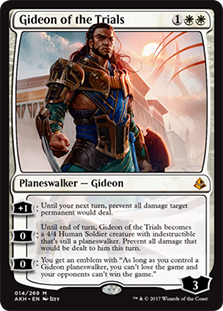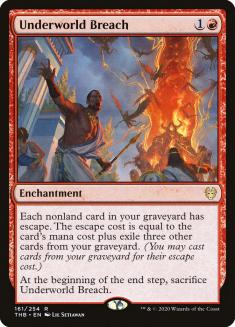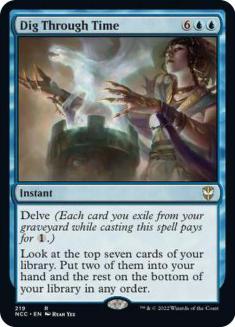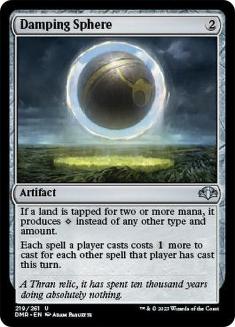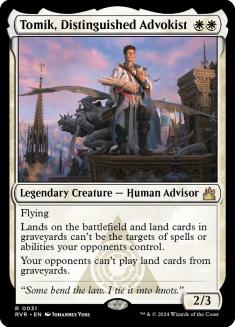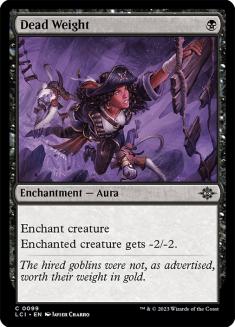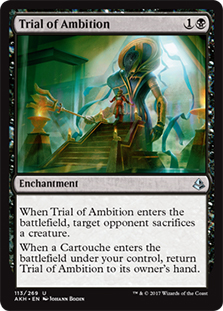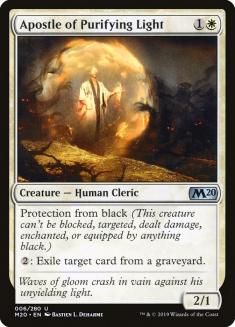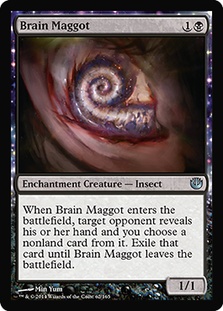Being linear in Pioneer is overrated.
Over the last few weeks, the Pioneer metagame has seemed to converge around the likes of Lotus Breach and various Inverter of Truth shells. With the format still in its infancy, it’s hard to shake the feeling that this isn’t the final step in its evolution, and it’s simply a matter of adapting further.
So what does this actually mean?
It means that some of the decks that have been popular are going to fall by the wayside, because they can’t hang with what people are doing now. The proactive midrange decks without enormous game-ending spells are a great example of this.
Take the Mono-Red Midrange/Aggro deck, affectionately labeled “Chonky Red,” from a couple of months ago. The deck is perfectly fine at everything it does, but in any eternal format, it’s hard for “fine” decks to withstand the test of time. As the format has become more focused on specific things, it’s harder to actually get away with having mediocre disruption and a bunch of clunky, albeit powerful, threats.
This is why we’ve seen the aggro decks of the format move in one of two directions, hyper-aggressive or disruptive. Red moving away from four- and five-mana spells and toward Bomat Courier and friends is an example of the former; Spell Queller becoming the centerpiece of the other proactive creature deck an example of the latter.
Orzhov Auras is something I’ve been kicking around for a little bit that actually has the ability to morph between the two.
Creatures (17)
- 2 Favored Hoplite
- 4 Sram, Senior Edificer
- 3 Aphemia, the Cacophony
- 4 Alseid of Life's Bounty
- 4 Hateful Eidolon
Lands (20)
Spells (23)

To relate the archetype to another: this deck tends to operate in a way that feels similar to Modern Selesnya Hexproof, but postures in sideboarded games in a fashion that’s closer to Modern Infect. Let me expand a bit:
Selesnya Hexproof and Infect seem like they’re on the same gameplan, but they use different enough means to get there that it shifts how the two are built. Nobody is tripping over themselves to register Eager Cadet in eternal formats, so choosing to play either is a concrete acknowledgment that playing Eager Cadet, with a specific keyword attached to it, is good enough to be doing in an eternal format.
On the Hexproof side, having the built-in protection of its namesake keyword implies that the format is trying hard enough to be interactive, that making an 8/8 with a slew of keywords is going to be enough to singlehandedly win the game. Infect does something similar, but banks on interaction being inefficient or non-existent.
Acknowledging this mentality is one of the rudimentary steps in learning to tune and sideboard with seemingly linear decks, full of unique spells. Because Orzhov Auras doesn’t have some sort of namesake creature ability to tie the room together, it actually requires its pilot to understand what each piece of the puzzle is used for.
Creatures
Sram is the original draw to the deck for a ton of people. Generally, the drawback to playing Auras is that they’re going to put their controller in the negative when tracking card advantage. Sram offsetting that means that he allows his controller to simply upgrade their creatures across the battlefield, with mana being the only real investment.
Because he doesn’t have the self-pump incentive that Modern Selesnya Hexproof’s Kor Spiritdancer creates, he even allows for unique squeezes. Sure, they can kill the 2/2 card-draw engine, but then they aren’t spending a removal spell on the 6/5 flying, first strike, vigilant creature.
On the note of squeezes, Hateful Eidolon is a prime example of a card that creates no-win situations for the opponent. Being a low-risk one-drop to start suiting up is going to be invaluable in matchups that are defined by racing and this goes double when you factor in its lifelink.
When coupled with other creatures to suit up, Hateful Eidolon can even help Orzhov Auras win longer games by turning all of the opponent’s Doom Blades into Oblations. That exchange only works once before the person casting Oblation is just out of the game.
Having a Vines of Vastwood / Glistener Elf split card is a big game in a seemingly linear deck that’s looking to play multiple roles. Against decks that don’t have hard removal, Alseid is a great way to start applying early pressure. Against the removal-heavy decks, it’s a nice mix between Spellskite and the aforementioned Vines.
- Reasonable keyword? Check.
- Efficient size-to-cost ratio? Check.
- New angle of attack? Check.
- Synergy with deck? Check.
In a deck like this, where even the creatures are enchantments, Aphemia is frequently an army in a can. Because of how Auras force decks with removal to play, she survives more frequently than expected. Put another way: when everything is a must-kill threat, the threat that comes last is most likely to live.
Honestly, this card could be a few different things. I_DONT_KNOW’s Pioneer Challenge-winning list had Dryad Militant, and I’ve also seen Stonecoil Serpent. The deck really needs sixteen or seventeen creatures to be functional, and Favored Hoplite is simply a creature that plays the best with a deck that plans to target its own creatures several times.
Another idea I’m too cowardly to pull the trigger on is playing a couple of maindeck copies of Apostle of Purifying Light. This would mostly be a huge reaction to an uptick in Inverter and Sultai Delirium decks. We aren’t there quite there yet, but it isn’t completely out of the question.
The Business End
This is the big place where role assessment is going to come in handy. Different keywords are going to have different weights depending on the matchup. Recognizing that something like Sentinel’s Eyes has almost a blank text box against linear combo, and the mindset it takes to get there, is what informs how to prioritize different cards in the deck.
Like Sram, these are the flashy payoff cards for building an entire deck around enchantments. Outside of Magical Christmas Land, these cards aren’t usually going to be giving more than +5/+5, but that’s still a hell of a deal for one or two mana.
Despite not having much in the way of impactful text, Sentinel’s Eyes having its own form of recursion is absolutely bananas in this deck. That means that even when creatures die, it’s going to trigger Sram and Hateful Eidolon over and over.
The card doesn’t shine in matchups that don’t involve blocking, or where the opponent is low on removal, but the things it does in more traditional games of Magic are good enough to justify its inclusion.
Similar to Sentinel’s Eyes, Gryff’s Boon is going to shine in matchups where flying is an important keyword – either for the sake of evasion against other creatures or blocking against Spirits. Its activated ability is a steep cost for a deck that only has twenty lands, yet can come up a good bit in some slower matchups.
First strike is one of the best mechanics at making combat an absolute nightmare. Five-plus power and first strike might as well read “never dying to combat damage.”
In Modern, Cartouche finds its way into Selesnya Hexproof decks by virtue of it insulating against Edict effects like Liliana of the Veil. In Pioneer, that isn’t as much of an issue. In spite of this, the creatures in this deck lacking their own built-in protection frequently incentivizes its pilot to spread Auras out across multiple bodies for the sake of playing around removal.
Blossoming Defense with a bit of NOS. Being able to protect against Supreme Verdict is an entirely new level for this style of spell, and its strength is a large reason that this deck is viable in the first place.
The Sideboard
There are a ton of cards that could find their way into the sideboard based on the expected metagame. The biggest draw to being an Orzhov-colored aggro deck is that white and black have the best disruptive tools in Pioneer:
The deck’s needs are going to shift based on what cards are expected, but in its current form, I’ve chosen to lean into more synergistic pieces, rather than cards that may be more efficient.
Thoughtseize is the biggest card that’s missing from the sideboard at the moment and I’ve waffled a bunch on whether or not to include it. The theory behind not including the card at this point is rooted in the role that it plays in the matchups that it would be sideboarded in.
At this point, the biggest combo decks in the format are decks that either utilize Dig Through Time or are tuned to be able to combat Inverter of Truth (read: a more disruptive Thoughtseize deck).
Dig Through Time decks are going to be naturally more resistant to Thoughtseize for two reasons. The first is fairly self-explanatory, in that they have access to the card Dig Through Time, which has unparalleled levels of selection for its cost.
The latter is that the decks that play Dig Through Time are encouraged to play additional cantrips and selection, for the sake of fueling their delve spells. This means that even without Dig, these decks are going to naturally recover from a single hand disruption spell more easily than decks that don’t play upwards of a dozen card selection spells.
Following this logic, there are two options for players that are interested in disrupting their combo opponents: up the quantity of interactive pieces or up the efficacy of the disruption.
Orzhov Auras being a synergy-based deck means that diluting the deck an enormous amount isn’t really an option, so cards that are more effective than Thoughtseize are necessary.
Pointed hate cards are a way to have single cards invalidate entire strategies, rather than trying to pick single pieces out. The sideboard being full of these types of effect is no accident and is a concession to the fact that making a 10/10 isn’t the most powerful thing that can be done in the format.
Tomik is actually one of the nicer hate cards that white has access to in the format. Being able to turn off opposing copies of Hidden Strings while also serving as a card that can pressure opponents and wear Auras is incredibly attractive.
In a good number of creature matchups, Tomik even outpaces Favored Hoplite due to it having built-in flying. Bant Spirits in particular is a matchup where Tomik shines, despite simply acting as a two-mana 2/3 with flying.
These two cards serve as a removal package against other creature decks. Dead Weight gets the nod over Fatal Push because of how well it combos with Sram, Aphemia, and Hateful Eidolon. For the most part, the creatures that Fatal Push kills that Dead Weight can’t aren’t huge issues.
Trial of Ambition may look strange at a glance, but reread the second ability of the card.
When a Cartouche enters the battlefield under your control, return Trial of Ambition to its owner’s hand.
This deck actually has the capacity to rebuy it. Any game where Cartouche triggers Trial of Ambition just feels like cheating, and it comes up more frequently than one would assume. Creature decks aren’t exactly known for their removal, so Hateful Eidolon and Sram are far more likely to get going.
There are three kinds of removal in the format: conditional removal, sweepers, and black removal. Outside of Supreme Verdict, there aren’t really any unconditional sweepers running around, meaning that sizing is a factor with other removal.
Unsurprisingly, Lava Coil, Lightning Strike, and so on don’t exactly line up very well against the deck full of permanent pump spells. This means having a card that’s naturally resistant to Fatal Push and Abrupt Decay is fantastic. Apostle of Purifying Light seems a little goofy at first, but it actually does an impressive Paladin en-Vec impression.
Matchups
VS Dimir Inverter
Out:
In:
Whenever you bring in more threats, trim Favored Hoplite. Hands that are too threat-heavy are actually a little underpowered, since the deck needs to actually get the ball rolling in order to do anything of consequence.
It’s possible that the deck should just have a couple of Auras over Brain Maggot, but I’ve liked the card as a pseudo-Spellskite.
VS Lotus Breach
Out:
In:
The choice to cut an Aphemia over Favored Hoplite is primarily for curve reasons. They aren’t looking to trade very much, so Aphemia isn’t that different from Welking Tern. That being said, Welkin Turn generates more damage per turn than Sentinel’s Eyes, so it’s getting the nod there.
VS Bant Spirits
Out:
In:
Trimming on a copy or two of All That Glitters has come up in two kinds of matchups for me: control matchups, where it’s hard to have it be anything more than a two-mana three-point burn spell, and decks that can chump block a creature forever.
Bant Spirits makes it hard to actually get anywhere with a super-tall creature and generally becomes a little more attrition-y. Brazen Borrower, Reflector Mage, and Deputy of Detention can also make cards in the vein of Ethereal Armor a little less exciting. Always cut All That Glitters before Ethereal Armor for mana efficiency purposes.
This is the matchup where Alseid of Life’s Bounty granting evasion comes up the most (specifically naming blue). Remember you almost never want to name white with Alseid if you can avoid it, as it knocks off all the Auras in the deck.
VS Azorius Control
Out:
In:
Keep Gryff’s Boon over Sentinel’s Eyes because of Elspeth, Sun’s Nemesis and Castle Ardenvale. If you have a Gideon, it’s going to be smart to sandbag one of the one-drop enchantments, because five is magic number to kill a Teferi, Time Raveler right after it enters the battlefield and rolls up.
The key in this matchup is committing just enough to the battlefield that you can navigate the squeeze that Azorius Charm and Supreme Verdict create. Luckily, this is where the mana efficiency of the deck comes up in a big way.
Remember that they’re going to struggle to permanently deal with a Sram if you don’t attack with it.
Prioritize killing Teferi because he turns off Karametra’s Blessing, which is the most important card in the matchup. Aphemia is the runner-up, as it is the best thing to deploy after a Supreme Verdict.
VS Sultai Delirium
Out:
In:
This matchup is about bringing in more powerful threats and hoping to ride them to victory. Apostle of Purifying Light is pulling double-duty here, as its activated ability comes in handy against Uro, Titan of Nature’s Wrath.
Cartouche’s first strike isn’t particularly useful and the token doesn’t line up well against a good chunk of the cards in Sultai Delirium.
If you’re about to get Emrakul’d, crack your Alseids and put all of your Auras on the battlefield. One of the benefits of a deck as linear as this one is that it can be hard for a Mindslaver to screw up a 16/16 too hard.
Approach
Just remember that you’re the aggressor in most matchups. 10/10s are powerful, but aren’t the most powerful thing possible. Prioritize developing threats over disruption in order to start applying pressure sooner, rather than later.
Most of your sideboarding decisions are going to revolve around how to most adequately pressure the game plan that the opponent is bringing to the table.
If you’re in Pioneer for the long haul, learning this kind of deck is going to pay dividends when the metagame is right for it, and I can’t recommend it enough.

